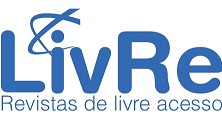INFRASTRUCTURE LIMITATIONS IN THE ESTELA DO NORTE SETTLEMENT – MINAS GERAIS
A STUDY ON THE PERSPECTIVE OF WATER USES
DOI:
https://doi.org/10.70860/rtg.v13i29.14521Keywords:
Water, Rural Settlement, Montes Claros, Public PolicyAbstract
This article aims to analyze the scenario and the alternatives of water use in the Estrela do Norte Settlement in Montes Claros - Minas Gerais in line with a brief context of the artesian wells existing in the North of Minas Gerais and the conflicts arising from this use of water. Among the theoretical-methodological assumptions, the literature review and the mapping from a case study with 31 settled families stand out. In this sense, it appears that 90% of respondents reveal that water from an artesian well is not enough to meet the needs of peasant families. Furthermore, 93% of those interviewed highlighted the need for new wells in the Settlement to ensure agricultural production, as well as domestic supply. In view of the above, it is possible to infer the challenges in accessing water in the Semiarid North of Minas Gerais, whose analyzes point to new research in articulation and, above all, interventions through public policies that ensure access to water as a common good of humanity.
References
ALBUQUERQUE, Caio R. Pesquisa da Esalq investiga uso da água no meio rural brasileiro. Mar. 2012. Disponível em: <https://www5.usp.br/noticias/pesquisa-noticias/pesquisa-da-esalq-investiga-uso-da-agua-no-meio-rural-brasileiro.>. Acesso em: 10 jun. 2015.
ARTICULAÇÃO NO SEMIÁRIDO BRASILEIRO – ASA. Programa de formação e mobilização social para a convivência com o semiárido: um milhão de cisternas. Disponível em: < http://www.asabrasil.org.br>. Acesso em 05 abr. 2012.
BOUGUERRA, Mohamed Larbi. As batalhas da água: por um bem comum da humanidade. Petrópolis, RJ: Vozes, 2004.
BRASIL. Constituição da República Federativa do Brasil de 1988. Disponível em: <http://www.planalto.gov.br/ccivil_03/constituicao/constituicao.htm>. Acesso em: 10 abr. 2020.
CEPOLINI-FERREIRA, Gustavo H.; Almeida, Géssica D. Pinto. O Programa Um Milhão de Cisternas: uma análise a partir do Semiárido Norte Mineiro. In: Cepolini-Ferreira, Gustavo H. (Org.). A Água no Cenário do Semiárido Brasileiro. Ponta Grossa: Atena Editora, 2019. DOI: https://doi.org/10.22533/at.ed.5331919121
FREIRE, A. G.; RIBEIRO, E. M.. Água, um recurso comum: gestão de recursos hídricos e comunidades rurais. In: Anais III Encuentro de las Águas: água, vida y desarrollo, 2001, Santiago, Chile.
HIRATA, Ricardo; ZOBY, José Luiz Gomes; OLIVEIRA, Fernando Roberto de. Água subterrânea: reserva estratégica ou emergencial. In: Águas do Brasil: análises estratégicas. São Paulo: Instituto de Botânica; 2010.
MARCONI, Marina de Andrade; LAKATOS, Eva Maria. Fundamentos de metodologia científica. São Paulo: Atlas, 2009.
PETRELLA, Ricardo. O Manifesto da Água: argumentos para um contrato mundial. Petrópolis, RJ: Vozes, 2004.
PORTO-GONÇALVES, Carlos Walter. A globalização da natureza e a natureza da globalização. Rio de Janeiro: Civilização Brasileira, 2012.
REBOUÇAS, Aldo. Uso inteligente da água. São Paulo: Escrituras Editora, 2004.
SCHISTEK, H. Como conviver com o semiárido. In: Caritas Brasileira, CPT, FIAN. Água de chuva – o segredo de convivência com o semiárido. São Paulo, Paulinas, 2001.
SIRVINKAS, Luís Paulo. Manual de Direito Ambiental. São Paulo: Saraiva, 2014.
SOUZA, Carla Cristina Aguilar de et al. Desigualdade nos territórios de desenvolvimento de Minas Gerais: período 2000 a 2013. 2014. Disponível em: <https://diamantina.cedeplar.ufmg.br/portal/download/diamantina-2016/147-235-1-RV_2016_10_09_00_33_14_423.pdf>. Acesso em: 18 fev. 2019.
SUDENE. Delimitação do Semiárido - 2017. Disponível em: <http://www.sudene.gov.br/delimitacao-do-semiarido>. Acesso em: 20 set. 2020.
TUNDISI, José G. Água no Século XXI: Enfrentando a Escassez. São Carlos: Rima, IIE, 2005.
XAVIER, R. P. Influência de barreiras sanitárias na qualidade da água de chuva armazenada em cisternas no semiárido paraibano. Dissertação de Mestrado em Engenharia Civil e Ambiental. Campina Grande – PB: UFCG, 2010.
Downloads
Published
How to Cite
Issue
Section
License
Copyright (c) 2024 Tocantinense Journal of Geography

This work is licensed under a Creative Commons Attribution-NonCommercial-NoDerivatives 4.0 International License.
Revista Tocantinense de Geografia does not remunerate any author for the publication of their texts. The contents of the texts published in this journal are the responsibility of the authors.








.png)












